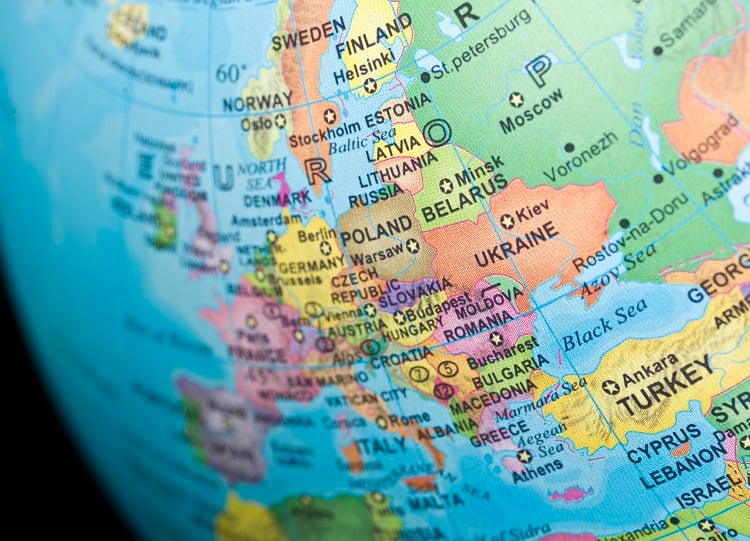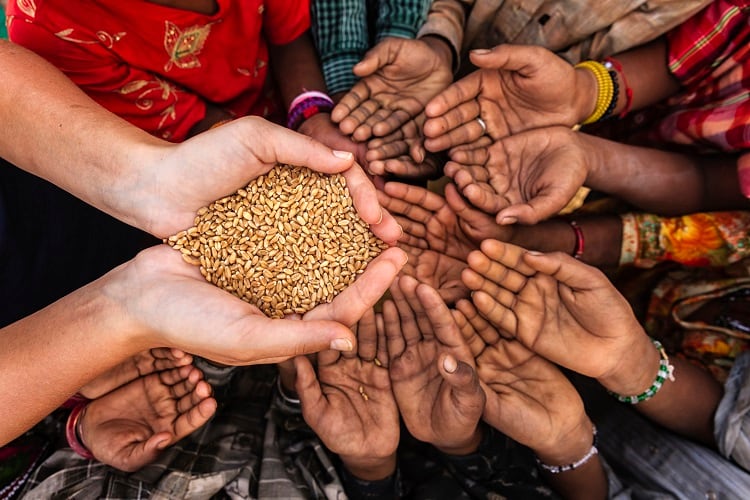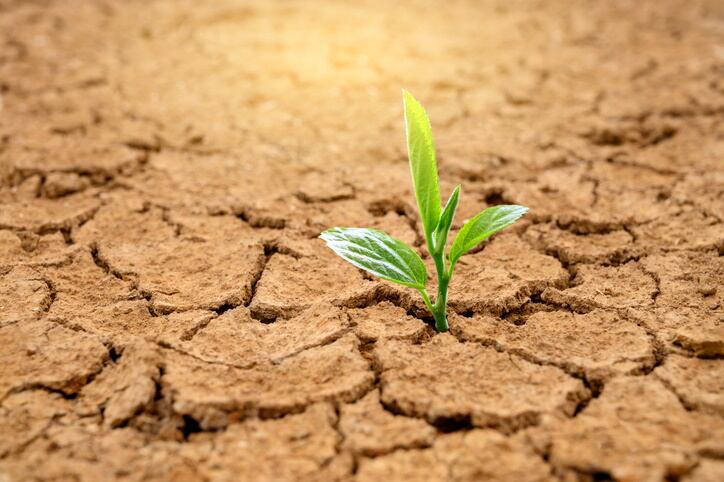Global food security is ‘tilting’ into a state of ‘high risk’, according to McKinsey & Company. Confounding factors include the COVID-19 pandemic, supply chain strains, and climatic events.
Ukraine and Russia have been at war since February this year. Together, the countries produce roughly 28% of the wheat and 15% of the corn exported globally. Due to logistical constraints exacerbated by blocked Black Sea ports, exports have dropped.
And next year may be even worse, forecasts the management consultancy.
Reduced export volumes in 2022
Sharp reductions in export volumes this year are the result of blocked ports in the Black Sea and limited alternative routes.
On land, for example, wheat and corn supplies attempting to exit Ukraine via rail or truck transport have faced logistical bottlenecks. Ukraine uses different rail track gauges than some of its neighbouring, while a shortage of rail cars and limited shipping capacity in Polish and Romanian ports are also impeding exports.
In new insights published yesterday, the management consultancy said it expects the situation will remain ‘uncertain and fragile’.
At sea, logistic constraints alone have reduced export volumes from Ukraine by an estimated 15m to 19m metric tonnes, according to McKinsey, adding that if grain soon starts flowing from Black Sea ports, exports could be higher. In Russia, export volumes have dropped by two to three million metric tons.
While making up just 5% of the 400m metric tons that are traded globally each year, the management consultancy warned even a 5% reduction can be enough to cause ‘significant’ disruption to the two-year commodity cycle.
Looking forward to the next planting season, it is expected supply will ‘tighten’. Driving factors include the war’s disruption of Ukrainian planting and harvesting, as well as ‘less-than-optimal’ inputs into other growing countries’ crops, including Russia and Brazil.
“We estimate that these impacts could create a 23m to 40m metric ton deficit of globally traded grain in 2023.”
Of course, there is a big difference between 23m metric tons and 40m metric tons. The smaller deficit is possible if agreements are respected and Black Sea exports from Ukraine increase considerably.
The more pessimistic deficit reflects what could happen if Ukrainian ports remain largely obstructed, if farmers have limited access to agricultural inputs and struggle to pay for them, and if lower acreage is planted, the McKinsey authors noted.
‘Clouded’ outlook for food supply in 2023
Next year, there may be more damage to the global food supply, warns the management consultancy.
As of yesterday (17 August), logistical issues have led to a grain export deficit of up to 18m to 22m metric tons out of Ukraine and Russia. At the same time, many farmers in affected regions are unable to do their jobs, from preparing fields to planting seeds and fertilising crops. This, McKinsey suggested, will ‘likely’ result in even lower volumes next harvest season.
“Some of this deficit may be recuperated depending on the success of Black Sea export agreements, logistics improvements, and other interventions. However, factors including the impact of drought throughout the world’s breadbaskets – a trend expected to worsen over time – cloud the outlook.”

The management consultancy has modelled the potential harvest of each of Ukraine’s administrative divisions based on interviews with growers and on local data. It has estimated that overall, crop production in Ukraine will drop by 35-45% in the next harvesting season.
McKinsey puts this down to multiple factors, including reduced harvest area due to ongoing military actions and land mines, reduced incomes for farmers, lower yields due to reduced access to fertilisers, and ‘ripple effects’ from greater input costs such as diesel and fertiliser. And of course, logistics may continue to disrupt exports.
“Due to these combined factors, exports from Ukraine are likely to decrease by a total of 30m to 44m metric tons for the 2022-23 marketing year from a pre-was basis.”
What’s the impact at a global scale?
Limited food supply means higher prices for the food that is available. While undoubtedly high global food prices will affect all countries, some are more capable of coping with food shortages and price shocks than others.
Those considered well protected include China, the US, and EU Member States. These countries can produce large amounts of food themselves, have high stocks, and elevated purchasing power.
Others, stressed McKinsey, are ‘highly vulnerable’. Bangladesh, Ethiopia, Somalia, and Yemen, for example, fall into this category. Their situation is almost the exact opposite of the ‘well protected’ nations: they rely on grain imports, have limited stocks, and low purchasing power.
“These countries may be hit hard by price increases. More than 1.4bn people live in such areas, mostly in Africa and Asia; if the global shortage continues and countries deplete their reserves, this figure could increase to about 1.9bn people.”

A compounding concern is that on the back of the COVID-19 pandemic, governments may be less equipped to help subsidise food supply. The pandemic has depleted countries’ budgets and currency reserves and set their debts to ‘record levels’, explained the management consultancy.
“Food purchases represent a larger-than-usual share of consumer spending, and unemployment is high in many countries; if governments can’t dampen the shock, households will have no choice but to dedicate more of their budgets to buying food.
“In this context, even a slight disruption in supply could substantially disturb global food prices and societies’ abilities to cope with them.”
Can anything be done?
If mitigation strategies are put in to place immediately, the worst outcomes could well be avoided, according to the consultants.
In the short-term, three fundamental steps have been pinpointed that McKinsey believes could help reduce risks.
The first is to unblock and de-risk Black Sea logistic routes. Secondly, trade restrictions must be reduced, and buffer stocks released. Further, to rebalance global supply, individual countries must increase the supply of grain traded on the world market. And lastly, financial aid must be provided to aid the most impacted areas and populations.
In the long-term, stakeholders should plan for how to avoid the next crisis. McKinsey argues ‘fundamental’ changes to global behaviour could boost transparency and resilience to the global food system.
Suggested actions include sustainably transforming agriculture to boost yields, especially in importing countries with fast-growing populations; finding ways to reduce global food waste and optimise use of land for food and biomass production; and accelerate the development and adoption of alternative meat and encourage the consumption of the most efficient proteins.
“Depending on the duration and severity of the war, the caloric requirements of 250m people could be lacking from the global supply,” stressed McKinsey.
“These sobering statistics underscore the magnitude and urgency of the situation.”




